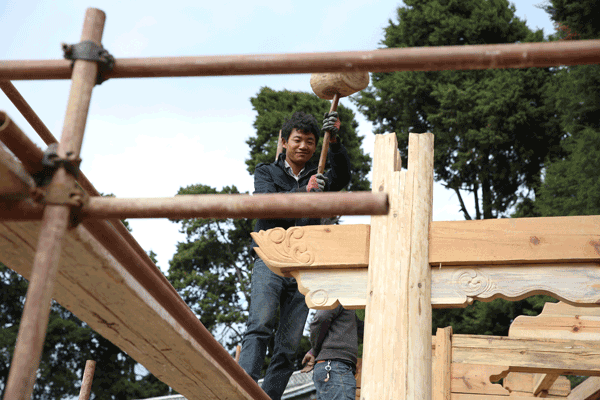Village protection plan preserves ancient culture
 |
|
Workmen help to build a local history museum in Shaxi. HOU LIQIANG/CHINA DAILY |
Exodus
While it is encouraging that the central government has listed more than 4,000 settlements as National Traditional Villages since 2012, some are still experiencing an exodus of residents, and some have been damaged by the development of tourism, he said.
At present, there is no formal protection plan for traditional villages, while villagers are mostly unaware of the value of their villages and therefore lack awareness of the need to protect them. In such situations, the villages are prone to damage, he said.
He urged the government to formulate a mechanism for the development of tourism in ancient villages, and said it should not be allowed unless protection is given a high priority.
According to Feng, homes in many traditional villages have been passed down through the generations for hundreds of years, and their protection is related to the inheritance and preservation of the national culture: "They shouldn't be destroyed by the current generation of Chinese people in just a few years."
Zhu Liangwen, a retired professor of architecture at Kunming University of Science and Technology in Yunnan province, said a lack of knowledge has led to the current situation: "For a long time, China's construction authorities paid most attention to urban development. They have limited knowledge of the rural areas, but they haven't conducted sufficient research into rural development. Instead, they sit in offices talking about the issue."
The 79-year-old academic, who has devoted himself to the protection of traditional residential architecture since 1981, said that lacking proper understanding of rural areas, many planning institutes in cities drew up plans for traditional villages based on their experience of urban development.
Most of the planning they conduct is impractical and the planners usually leave after drawing up their plans, but few rural residents have the ability to carry out the work, and there are few government documents to explain how to manage rural construction companies or the extent of the developers' power.
It can be hard for architectural experts to protect traditional houses because they may have to heed village heads with little or no knowledge of architecture, he said.
Zhu has found it difficult to get full cooperation from village heads to carry out his plans and said he argues with them regularly.
In Azheke village, Yuanyang county, Yunnan, the village head demolished a small house used for sacrifices to gods and ancestors-the only one in the immediate vicinity-without listening to Zhu's suggestions about preserving it.
"Many villagers and officials are at least 15 years behind the scholars who serve as heralds in the protection of traditional architecture. Only in about 15 years will they realize what a great pity it was that they demolished these ancient houses," he said.
Contact the writers at houliqiang@chinadaily.com.cn
















